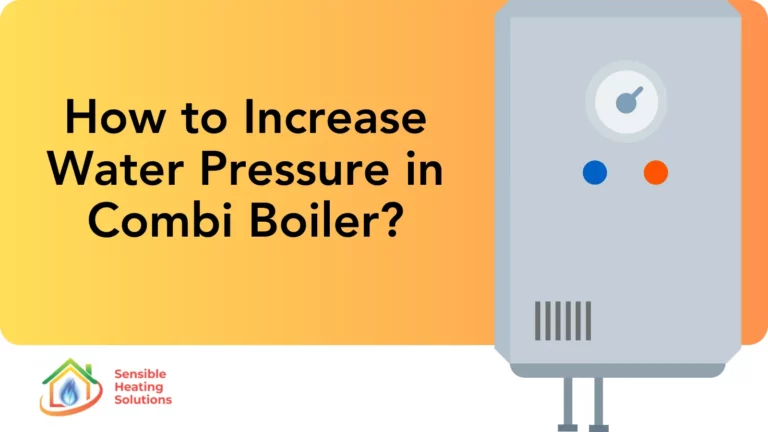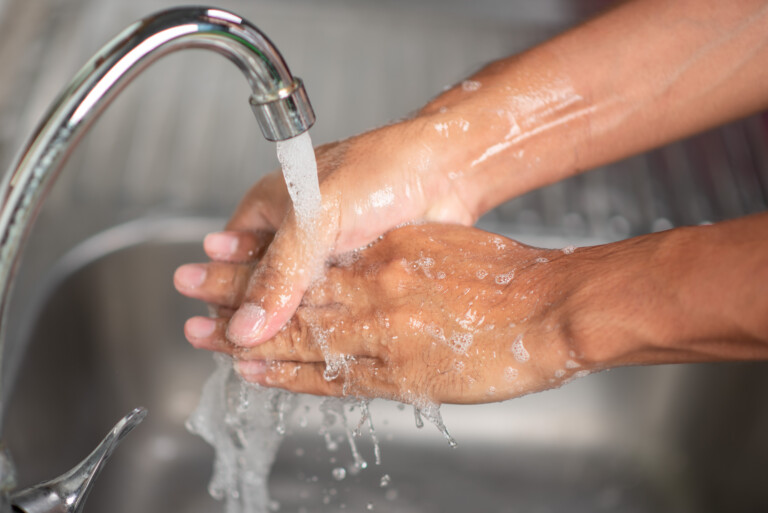An ode to the radiator: 8 reasons to love your heating system
12th October 2023


Call us 0116 366 5664
16th May 2024

To increase water pressure in a combi boiler, turn off the boiler. Then, find the filling loop and open the valves. Do this until water enters the system and the gauge shows the right pressure. Combi boilers are compact systems. They provide both hot water and central heating. Combi boilers draw water directly from the mains and heat it on demand. They do not store it in tanks. If you have low water pressure, check for leaks. Make sure the filling loop is used correctly and adjust the pressure using the boiler’s gauge.
Low water pressure in a combi boiler can be caused by leaks, blockages, or faulty parts. Follow these steps to find and fix the problems. This will restore and keep good water pressure in your combi boiler. Fixing these issues will help your combi boiler running well and at a consistent level.
Inspect the whole heating system for leaks. Leaks often show as damp patches on floors, walls, or ceilings. Examine the boiler and all accessible pipes and radiators for any signs of water leakage. Leaks reduce the system’s pressure. They must be fixed to restore proper function.
Find the pressure gauge on your boiler. It shows a dial with a needle for the pressure level. If the needle is below 1 bar, the pressure is too low. After re-pressurising the system, ensure the needle rests between 1 and 1.5 bars when the system is cold.
The filling loop is easy to spot. It usually has a flexible hose with a valve at each end. It connects the mains system and your boiler. Open both valves to allow water to flow into the system, watching the pressure gauge closely. Close the valves once the desired pressure is reached to avoid over-pressurisation.
If the water flow is restricted, make sure no blockages are in the boiler or its pipes. Check for and clear any blockages in the boiler filter or pipes. Blockages can slow water flow and reduce pressure.
A broken pressure relief valve can cause ongoing issues with boiler pressure. It can leak water and lower pressure, or fail to keep pressure safe. Replace this valve if it shows signs of wear or leakage.
Each step fixes one part of the system. Fixing these issues can restore boiler function and efficiency.
When standard adjustments do not increase the water pressure in a combi boiler, additional measures can be considered. These options involve big changes or upgrades to the heating system. They are to make it work better and use less energy.
Installing a booster pump increases the mains water pressure entering your home. This increase raises the pressure available to your combi boiler. This device amplifies the water pressure. It does this before it reaches the boiler. This ensures a steady and sufficient flow.
Upgrading to a larger combi boiler can be beneficial for homes with high water usage. Larger boilers have more capacity. They are better at handling many demands for hot water at once. This can improve water pressure and heating efficiency in your home.
Using a regular boiler with a separate hot water cylinder can solve low water pressure issues for homes with combi boilers. Regular systems store hot water. They keep pressure separate from the mains. This setup often results in better water flow and stability.
These steps may seem hard. If low water pressure keeps happening, contact a qualified heating engineer. A professional can assess your situation. They can suggest the best solutions and ensure that changes follow local laws and safety standards.
To detect low boiler pressure in a combi boiler, check the pressure gauge. It’s usually on the front panel of the boiler. The gauge usually has a dial with a needle that shows the pressure of the water in the system. Normal operating pressure for most combi boilers should be between 1 and 1.5 bars. If the needle falls below 1 bar, this indicates that the pressure is too low. Signs of low boiler pressure include:
Low boiler pressure is not dangerous. But, it can lead to inefficiencies in heating and hot water. It can make the boiler less efficient. This can raise heating costs and make your home less comfortable. Persistent low pressure can strain the boiler. It could lead to more major mechanical failures over time. But, it is not a direct safety risk like high boiler pressure. High pressure is linked to leaks or explosions. If you notice low boiler pressure, you should fix it quickly. This is to keep up boiler performance and efficiency.
Re-pressurising a combi boiler means adding water using the boiler’s filling loop. This brings the pressure back to the recommended level. The filling loop is a flexible hose. It has a valve at each end. This valve connects the boiler to the household water supply. To re-pressurise the boiler, find the filling loop under or near the boiler. Open the valves to let water in and watch the pressure gauge. Once the gauge reads between 1 and 1.5 bars, you close the valves. This process ensures the boiler can heat water well without overstraining the system.
If your boiler lacks a filling loop, re-pressurising requires using an internal filling key or a built-in filling mechanism. Which you use depends on the boiler model. Find the internal filling valve. You might need to insert a specific key or turn a knob or lever in the boiler unit. Once you locate the valve or lever, open it to allow water into the system and closely watch the pressure gauge. After reaching the desired pressure, put the valve or lever back to its original position. This will stop the water flow.
Re-pressurising a boiler usually takes from a few seconds to a couple of minutes. The time depends on the starting pressure and the flow rate of water through the filling loop or valve. You must watch the pressure gauge closely during this process. It’s crucial to avoid over-pressuring. That can be as bad as low pressure.
Need help with your boiler or heating system? Contact us today
12th October 2023

16th December 2022

29th March 2023
